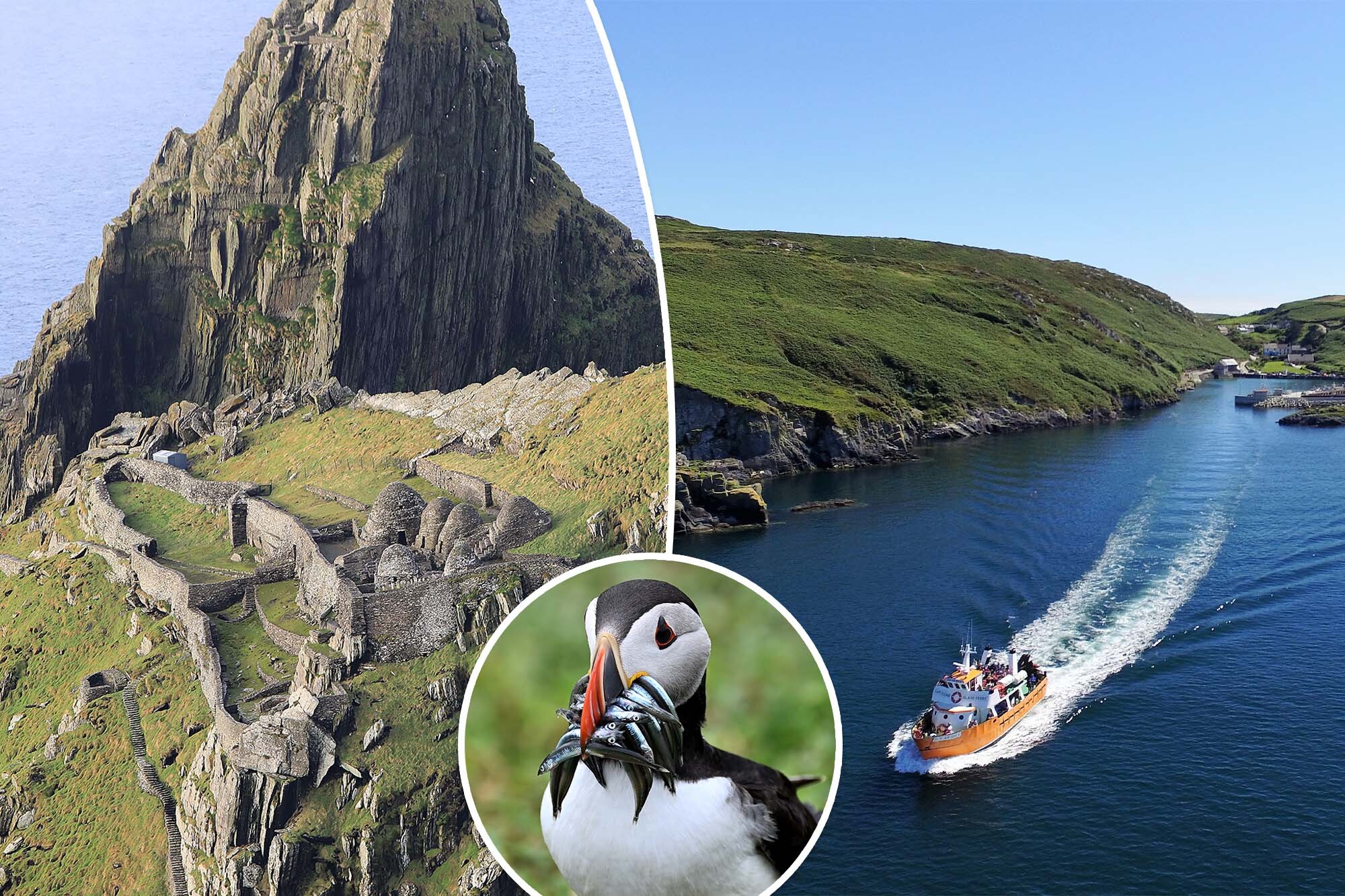
There’s nothing wrong with the Aran Islands, a popular destination off the coast of Galway.
But if you want to get off the beaten path in the land of leprechauns and Bono-haters, you’ll have to expand your horizons.
Ireland is home to more than 80 islands, about 20 of which are inhabited.
The most worthwhile are hidden gems travelers are just now discovering, largely thanks to Hollywood, which can’t stop filming on them.
What these islands lack in infrastructure, they more than make up for with scenery, wildlife and history.
Expect rocky roads rising up to greet you, wind coming at you from all angles and no guarantee that the sun will shine warmly on your face, let alone make an appearance.
But you won’t regret trekking to these five relatively obscure islands.
Skellig Michael
Picture a “Honey, We Shrunk Machu Picchu” surrounded by angry waves, and you have Skellig Michael, one of Ireland’s two Unesco World Heritage sites.
This 55-acre pinnacled rock, rising out of the North Atlantic Ocean 8 miles off the coast of County Kerry, is so outlandishly striking it played the planet of Ahch-To where Luke trains Rey in “Star Wars: The Force Awakens” and “The Last Jedi.”
The island’s only structures are two lighthouses and a mountaintop monastery housing sixth-century stone beehive huts. Only 180 visitors a day are allowed (sea conditions permitting) and they have just 2.5 hours to explore.
A steep 618 stairs lead to the summit and its sweeping views of the mainland. Tours (starting at $140 per person) are offered from mid-May through September.
Rathlin Island
Northern Ireland’s only inhabited offshore island is home to around 150 human residents and 250,000 breeding seabirds. This L-shaped enclave boasts one of the world’s only upside-down lighthouses.
Still in operation, it’s now a seabird sanctuary welcoming more than 24,000 visitors annually.
To reach Rathlin Island, take the 25-minute ferry ride from Ballycastle ($20 roundtrip) across the Sea of Moyle. At the port, either hop on the Puffin Bus or hoof it. “From the summit of Rathlin you can look across to Kintyre and Islay in Scotland,” said Mark Worthington of tour operator McKinlay Kidd.
Cape Clear Island
Cape Clear Island (pop. 120) may only be 2.5 square miles, but the best way to see this remote gem, 8 miles off the coast of West Cork, is via Ireland’s first electric minibus (tours from $6).
Occupied for at least 5,000 years, the island is a treasure trove of ruins including a fortress, a castle, passage graves and its own mini Stonehenge.
It’s also a popular stop on whale watching and dolphin cruises. To visit Cape Clear on your own, take the 40-minute ferry ride ($22) from Baltimore. You’ll have to walk or bike on — only residents can have cars on the island. Pro tip: it helps to know a little Gaelic because 62% of residents speak it.
Achill Island
Slightly smaller than Staten Island and far more mountainous, Achill is the largest of Ireland’s isles. Although it’s connected to the mainland (County Mayo) by a 740-foot-long swing bridge, it’s home to just 2,500 residents.
However, the population balloons in the summer thanks to Achill’s five Blue Flag beaches. The Atlantic Ocean here tops out at 61 degrees in August, but that doesn’t stop locals from snorkeling, kayaking, windsurfing and coasteering along the dramatic sea cliffs.
If Keem Bay looks familiar, that’s because it was featured in the Oscar-nominated film “The Banshees of Inisherin,” starring Colin Farrell and Barry Keoghan.
Legend has it St. Patrick blessed this bay to ensure no one would ever drown there. Spoiler alert: It didn’t work, but the beach does have lifeguards.
Great Saltee
Expect a wet landing if you plan on visiting this 120-acre uninhabited island just 3 miles off the coast of County Wexford. Although the 20-minute voyage ($33 roundtrip) to Great Saltee begins on a ferry in Kilmore Quay, passengers are transferred to dinghies before wading ashore.
The main attraction is the colonies of adorable Atlantic puffins who breed here every summer. This is also one of the only places in Eastern Ireland to see breeding grey seals.
Not-so-fun fact: Their pups hunt the chicks. Because the island is privately owned by the Neale family, the descendants of the self-proclaimed Prince Michael the First (died in 1998; not recognized by the Republic of Ireland) visitors of the human variety are only welcome from 11:30 a.m. to 4:30 p.m. Noblesse oblige.














